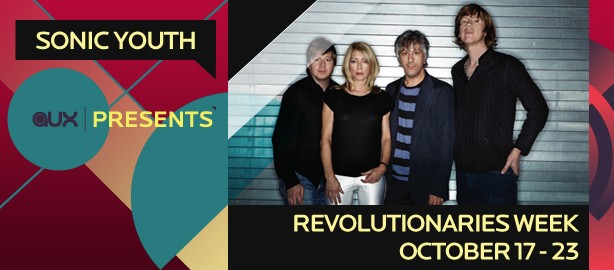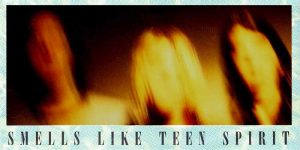 Music
Music
REVOLUTIONARIES MONTH: Sonic Youth
by Richard Trapunski
October 17, 2011
This month’s programming theme on AUX TV (the channel) is musical revolutionaries, a month-long salute to the legendary artists who changed the art form or the industry for the better. Some are well know, others less so, but all are equally important in the ebb and flow of the forever changing musical landscape. Today we look at Sonic Youth (while attempting to look past the awful news of Thurston Moore and Kim Gordon’s recent split), and explore the band’s legacy in alternative music and developing pop tendencies.

Chances are if you’re a Sonic Youth fan, you’ve probably heard this piece of lore: In 1995, with their major label Geffen breathing down their neck, Thurston Moore, delivered “The Diamond Sea” with the proclamation that he had finally written Sonic Youth’s crossover pop song. On first listen it didn’t seem that far-fetched. A poetic love song with an easily hummable hook, the track was spare and melodic, as evocative as it was accessible. There was just one problem: it was nearly half an hour long.
Though possibly apocryphal, the anecdote is a perfect encapsulation of Sonic Youth’s uneasy relationship with the music industry, especially as it existed in the “alternative” ‘90s. They had risen to prominence on the back of their reputation for rebellious experimentation, considered by many to be torchbearers for an underground movement that was quickly dissolving into the mainstream. And they reacted as many Gen X’ers would: by shielding their compliance behind a veneer of semi-ironic detachment.
But hidden beneath that wry façade has always been a pop band struggling to stay concealed. It wasn’t until the ‘00s, two decades after their start, that Sonic Youth began to fully embrace that ideal.
Even now, it’s hard for critics to mention Sonic Youth without the word “influential” following soon behind. That’s often used as shorthand for their use of noise, squall and unconventional tunings to stretch the boundaries of what could be done with the traditional bass-guitar-drums setup. But their influence wasn’t truly felt until they left the insular art-rock underground of galleries and loft spaces behind and introduced it to the world at large.
Music historians often point to the 1986-1988 impeccable trilogy of EVOL, Sister, Daydream Nation as the pinnacle of Sonic Youth’s career, largely because they were the first three manifestations of their attempt to amalgamate their avant-garde tendencies with traditional song structures (and because they were all fantastic albums). By the ‘90s, the copycat major label signings of bands like Nirvana saddled them with the “godfather” tag, something they struggled with on and off throughout the decade, especially as the grunge movement was watered down with generic uni-syllabic alt-rock bands like Bush and Live.
But by the turn of the ‘00s, few were looking to Sonic Youth to direct the course of rock music. Ironically it was at this point, beginning with 2002’s Murray Street and continuing through 2004’s Sonic Nurse, that the band made one of its most artistically lucrative transformations. Relieved of their boundary-pushing burden, Sonic Youth settled into a comfortable middle-aged groove that managed to translate itself into one of their most fertile periods.
You won’t find many who will highlight 2004’s “Unmade Bed” as a landmark composition in Sonic Youth’s catalogue, but to me it’s the perfection of the art-pop sweet spot only glimpsed on “The Diamond Sea”: obtuse-but-understandable lyrics, somehow tuneful blasts of feedback, ever-so-skewed interlocking guitar passages and melodic vocal hooks, all filtered into the classic four minute verse-chorus-verse-bridge-solo-chorus structure, no need for a radio edit. As far as I’m concerned, it’s the archetypal Sonic Youth song. And it came long after many people stopped paying attention.
Tags: Music, News, Nirvana, Sonic Youth





